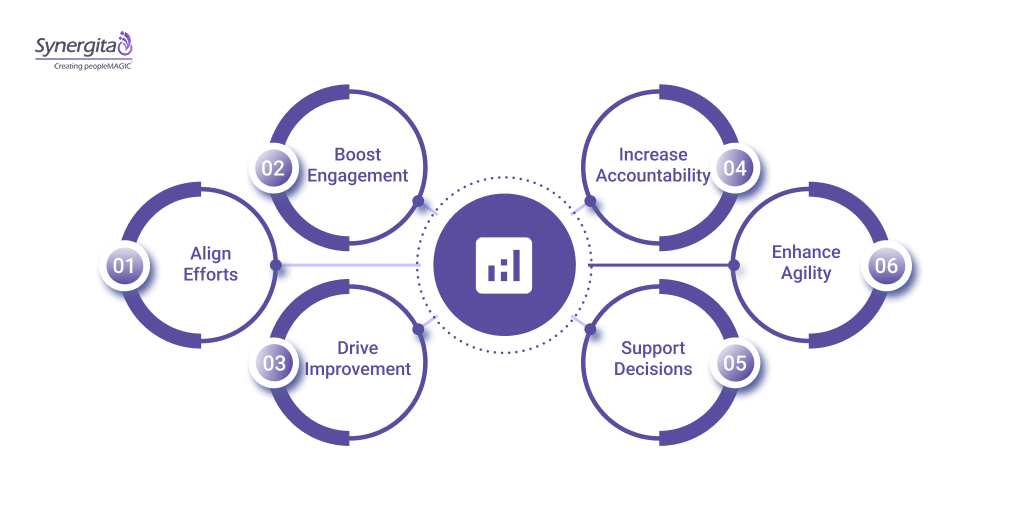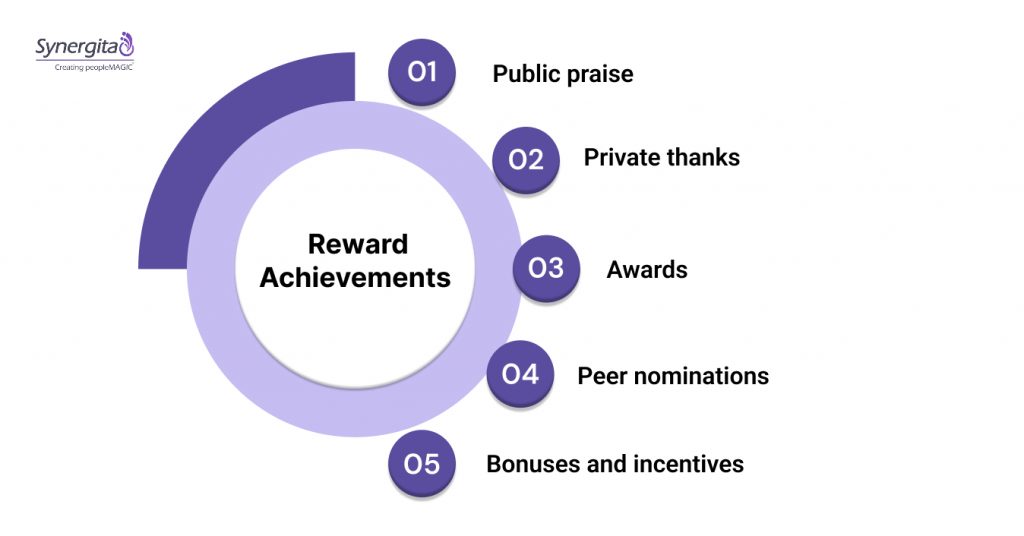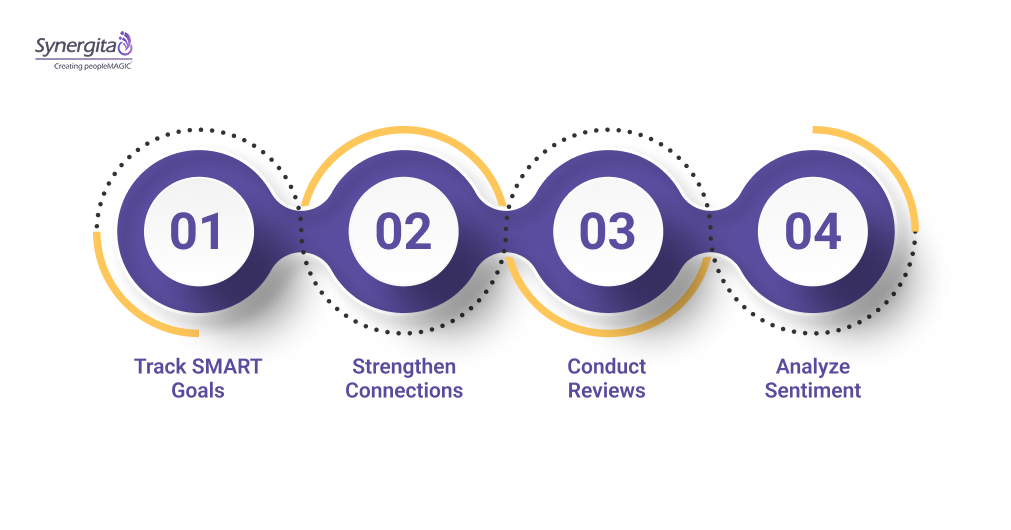77% of employees say ongoing feedback keeps them motivated, much more than annual reviews. So why do many teams still rely on once-a-year check-ins? Annual appraisals often overlook a vital opportunity to boost engagement, drive growth, and align your team on what truly matters.
Effective performance management requires continuous attention and adjustment throughout the year to ensure your team stays on the right track and adapts to changing priorities.
A strong performance strategy links daily work to big goals, drives continuous improvement, and builds accountability with clear, actionable steps.
This guide shares practical, research-backed tips to help your team grow, stay motivated, and deliver results.
Key Takeaways
- Effective performance strategies connect daily work to big goals and foster clear accountability.
- Setting SMART goals and using frameworks like OKRs ensures clear priorities and team alignment.
- Regular check-ins and personalized development plans enhance employee growth and retention.
- A culture of openness and trust encourages honest conversations, innovation, and stronger teams.
- Data-driven insights support fair evaluations, early problem-solving, and strategic decision-making.
- Empowering accountability with clear expectations and supportive coaching drives long-term success.
What Is Performance Management?
Performance management helps your people do their best work every day. It means setting clear goals, checking progress regularly, giving useful feedback, and making adjustments as needed. It’s an ongoing process, not an occasional one, that keeps everyone on track and growing. Done well, it makes sure employees know what’s expected and managers have the insights to support them at the right time.
Why Are Performance Management Strategies Important?

Effective performance management strategies are important because they:
- Align individual efforts with company goals: When employees see how their work matters, they stay focused.
- Boost engagement and motivation: Regular feedback and growth opportunities make employees feel valued.
- Drive continuous improvement: Frequent check-ins help spot problems early and adjust plans.
- Increase accountability: Clear expectations and coaching encourage ownership.
- Support data-driven decisions: Real-time insights help leaders act quickly.
- Enhance agility and competitiveness: Flexible management keeps organizations ahead.
Without a strong performance strategy, organizations risk misalignment, decreased enthusiasm, and missed growth opportunities.
Key Steps to Drive Employee Performance
So, how do you make sure your team stays focused and motivated? You need clear pathways that help every employee connect their daily work to your organization’s bigger picture.
Set Clear and Aligned Goals
Having well-defined goals eliminates confusion and gives employees a clear sense of direction. When people know exactly what’s expected, they can channel their efforts efficiently and avoid missteps.
Making Goals Work for Your Team
- Apply the SMART criteria—making goals Specific, Measurable, Achievable, Relevant, and Time-bound—to create clear and actionable targets.
- Use goal-setting frameworks like OKRs (Objectives and Key Results) to connect individual efforts with the company’s overarching mission, ensuring alignment across all levels.
For example, rather than a vague goal like “Enhance customer service,” define it as:
“Boost customer satisfaction rating by 10% by the end of Q4 by reducing average response time by 20%.”
Embrace Continuous Feedback and Regular Check-Ins
Nobody likes waiting a whole year just to hear how they’re doing. Giving—and getting—feedback regularly helps everyone fix problems early, celebrate wins, and keep growing.
- Make check-ins routine—like weekly, biweekly, or monthly—so feedback becomes part of your team’s rhythm, not just a box to tick.
- Keep things two-way: that means listening, not just talking, so people feel genuinely heard and supported.
A quick tip: Companies like Adobe swapped annual reviews for regular check-ins and found employees felt way more engaged and motivated.
Personalize Employee Development Plans
Everyone’s goals and ambitions are unique. Personalized development plans tailor learning opportunities, boosting motivation and retention. Organizations that invest in workforce development offer targeted learning paths, mentorship, and clear career progression. This nurtures talent, reduces turnover, and strengthens capability.
With Synergita, managers can personalize development plans, give ongoing feedback, and track growth, making people development scalable and effective.
Recognize and Reward Achievements

Acknowledging accomplishments encourages good behaviors and keeps performance high. Recognition can take many forms:
- Public praise: Shout-outs during meetings or company announcements inspire others.
- Private thanks: Personal notes or one-on-one compliments offer meaningful acknowledgment.
- Awards: Certificates or trophies mark achievements and create memorable moments.
- Peer nominations: Encouraging teammates to recognize each other builds team spirit.
- Bonuses and incentives: Timely rewards reinforce exceptional effort.
Celebrating milestones boosts morale and fosters a culture that values effort and results.
Conduct Regular Performance Evaluations
Performance discussions work best when routine and cyclical, not just annual. Regular evaluations provide chances to review progress, give feedback, and adjust goals. Focus these meetings on:
- Celebrating progress since the last check-in
- Providing timely, constructive feedback to build trust
- Recalibrating goals as priorities shift
Frequent reviews help prevent surprises, encourage honest communication, and identify development needs early. This continuous collaboration creates a culture of ongoing improvement.
Foster a Culture of Openness and Psychological Safety
A psychologically safe environment encourages honest expression and idea-sharing without judgment. This openness is essential for innovation and growth. Psychological safety leads to:
- Better collaboration through trust
- Greater acceptance of feedback
- An environment valuing continuous learning
When organizations have open cultures, innovation and engagement naturally rise. A good performance strategy helps by encouraging honest conversations, trust, and celebrating diversity. And that kind of trust? It’s what allows people to truly shine and keeps success going strong.
Use Performance Data to Drive Decisions
Data-driven decisions promote fairness and transparency in evaluations. Real-time data reduces bias and builds trust. Continuous monitoring ensures alignment with strategic goals.
Leaders who use data can:
- Spot performance trends early and act
- Allocate training and resources effectively
- Address underperformance promptly
This approach keeps the organization agile and focused on growth.
Prioritize Continuous Learning and Skill Building
Fast-changing industries demand ongoing skill enhancement. Supporting upskilling through formal training, coaching, and on-the-job learning equips employees for new challenges. Organizations with continuous learning cultures improve agility and competitiveness.
Customize Approaches Across Teams and Roles
One-size-fits-all doesn’t work. Tailor performance management techniques to each team’s unique needs and rhythms. For example, Microsoft adapts its system based on team functions, balancing flexibility with accountability. This respects workflows while maintaining alignment.
Promote Accountability and Ownership
Empower employees to own their performance through:
- Clear expectations about goals, responsibilities, and success measures
- Supportive coaching that develops skills and overcomes challenges
- Fair consequences that reinforce commitment and fairness
Clarity, support, and accountability motivate employees to innovate, take initiative, and stay engaged for long-term success.
When accountability is built into your culture, meaningful check-ins become a natural part of driving ongoing team success.
Make Every Check-In Count with Synergita Perform

Effective performance management relies on clear goals, continuous feedback, and real-time insights. Synergita Perform streamlines goal management, performance reviews, and appraisals on an automated dashboard that highlights trends and suggests actions to accelerate growth.
With Synergita Perform, you can:
- Set and track SMART goals for a focused, high-performing workforce.
- Strengthen manager-employee connections with continuous feedback and regular 1:1 meetings.
- Conduct unbiased 360° reviews to identify growth opportunities.
- Use AI-powered sentiment analysis to understand employee emotions and culture.
Transform your performance management and make every check-in count. Start your free trial with Synergita Perform today and unlock your team’s full potential.
FAQs
1. How does continuous performance management differ from annual reviews?
Continuous performance management involves ongoing feedback and regular check-ins throughout the year, fostering growth and trust. This contrasts with annual reviews, which occur infrequently and may miss timely course corrections.
2. Why is personalized employee development important?
Personalized development plans address individual goals and aspirations, boost motivation, reduce turnover, and ensure talent grows where it aligns best with both personal ambitions and company needs.
3. What are the benefits of using frameworks like OKRs in performance strategy?
OKRs (Objectives and Key Results) connect individual goals to the organization’s bigger priorities, promote collaboration, provide clear focus, and enable teams to measure progress toward impactful outcomes regularly.
4. How does effective performance management impact employee engagement and retention?
Employees who receive clear goals, ongoing feedback, recognition, and growth opportunities feel valued and motivated, leading to higher engagement levels and better retention rates.

